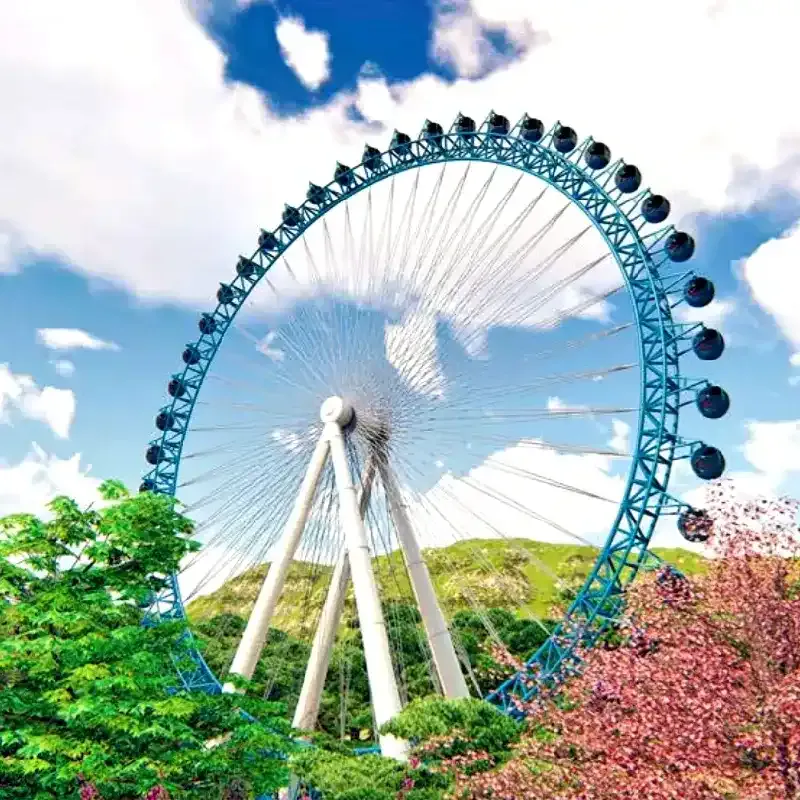- Albanian
- Arabic
- Belarusian
- Bengali
- Czech
- English
- French
- German
- Hebrew
- Hungarian
- Indonesian
- irish
- Italian
- Japanese
- kazakh
- Persian
- Russian
- Thai
- Uzbek
- Vietnamese
Evolution of Roller Coaster Designs Through the Years and Their Impact on Amusement Parks
The Evolution of Roller Coasters A Thrilling Journey Through Time
Roller coasters are a quintessential feature of amusement parks around the world, captivating thrill-seekers and families alike with their exhilarating rides. The evolution of roller coasters is a fascinating journey that spans over two centuries, transforming from simple wooden structures to complex high-tech marvels. This article delves into the history of roller coasters, highlighting significant milestones and innovations that have shaped the rides we know today.
The origin of roller coasters can be traced back to the early 17th century in Russia, where people would ride down large, sled-like devices made of wood down icy slopes, known as Russian Mountains. These early rides were primarily seasonal attractions, enjoyed during winter months when snow and ice provided the perfect conditions. As these structures gained popularity, the concept spread to Western Europe, particularly France, where the first proper roller coaster, the Promenades d'Eté, was constructed in the 19th century.
The Evolution of Roller Coasters A Thrilling Journey Through Time
As the 20th century approached, roller coasters became increasingly popular. One significant milestone came in 1901 with the opening of the Loop the Loop at Coney Island, which introduced the concept of vertical loops in roller coaster design. This groundbreaking feature ascended the thrill factor and paved the way for more daring designs to emerge.
roller coaster year

The post-World War II era witnessed a roller coaster boom as the economy thrived, and families flocked to amusement parks. The introduction of steel coasters in the 1950s revolutionized the industry. Unlike their wooden counterparts, steel coasters allowed for smoother rides and more intricate designs. The first modern steel coaster, The Cyclone, opened in 1927, and the trend rapidly escalated, leading to the construction of iconic rides such as the Kentucky Rumbler and Cedar Point's Magnum XL-200.
The late 20th century and early 21st century brought even more innovations to roller coasters. The introduction of computer-aided design allowed engineers to create imaginative and daring rides, pushing the limits of speed, height, and inversions. Coasters like The Phantom's Revenge at Kennywood and Fury 325 at Carowinds set records with their heights and speeds, offering unmatched adrenaline rushes.
In recent years, technology has continued to evolve, leading to the hybrid coaster trend, which combines the best features of wooden and steel coasters. These coasters provide the nostalgic feel of wood with the precision of steel, exemplified by rides like Intimidator 305 and Outlaw Run. Furthermore, innovations in theme integration, such as immersive storytelling and advanced ride systems, have transformed the roller coaster experience into a full-fledged adventure.
Looking ahead, the future of roller coasters promises even more thrilling advancements. With the integration of virtual reality and augmented reality, riders can expect enhanced experiences that transport them to fantastical worlds. Sustainability in amusement parks is also becoming a significant focus, leading to environmentally friendly designs and operations.
In conclusion, the evolution of roller coasters from their rudimentary beginnings to the high-thrill rides of today reflects the advancements in technology, engineering, and entertainment. As long as there are thrill-seekers eager for the next adrenaline rush, roller coasters will continue to capture our imaginations and fill our lives with excitement. The journey through their history is not just an unfolding of rides but a testament to human creativity and our endless quest for thrills.
-
Flume Ride-Hebei Zhipao Amusement Equipment Manufacturing Co., Ltd.|Thrilling Water Attraction&Customizable DesignJul.30,2025
-
Flume Ride - Hebei Zhipao Amusement Equipment | Water Coaster, Thrilling DescentJul.30,2025
-
Flume Ride - Hebei Zhipao | Thrilling Water AttractionJul.30,2025
-
Flume Ride: Thrilling Water Attraction by Hebei Zhipao|Log Flume Manufacturers&Flume Ride DesignJul.30,2025
-
Flume Ride-Hebei Zhipao Amusement Equipment Manufacturing Co., Ltd.|Thrilling Water Coaster, Safe DesignJul.30,2025
-
Flume Ride-Hebei Zhipao Amusement Equipment Manufacturing Co., Ltd.|Thrilling Water Attraction, Safe DesignJul.30,2025
